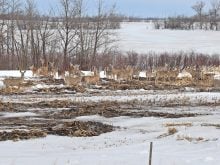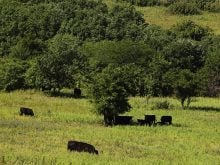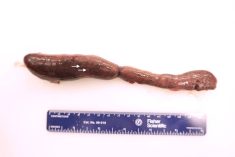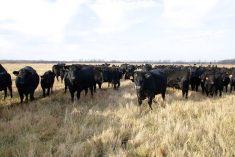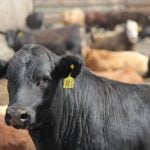The fungus that causes a deadly infection called white nose syndrome in wild bats has been detected in Alberta for the first time this winter.
Samples of bat guano from the southeastern portion of the province tested positive for the fungus. Similar guano-sampling efforts led to the identification of the fungus in several areas of Saskatchewan in 2021.
In recent years, hundreds of guano samples collected from prairie locations where bats roost have been tested. So far, there have been no reported cases of the disease in Alberta, but they will likely occur in the next few years.
Read Also
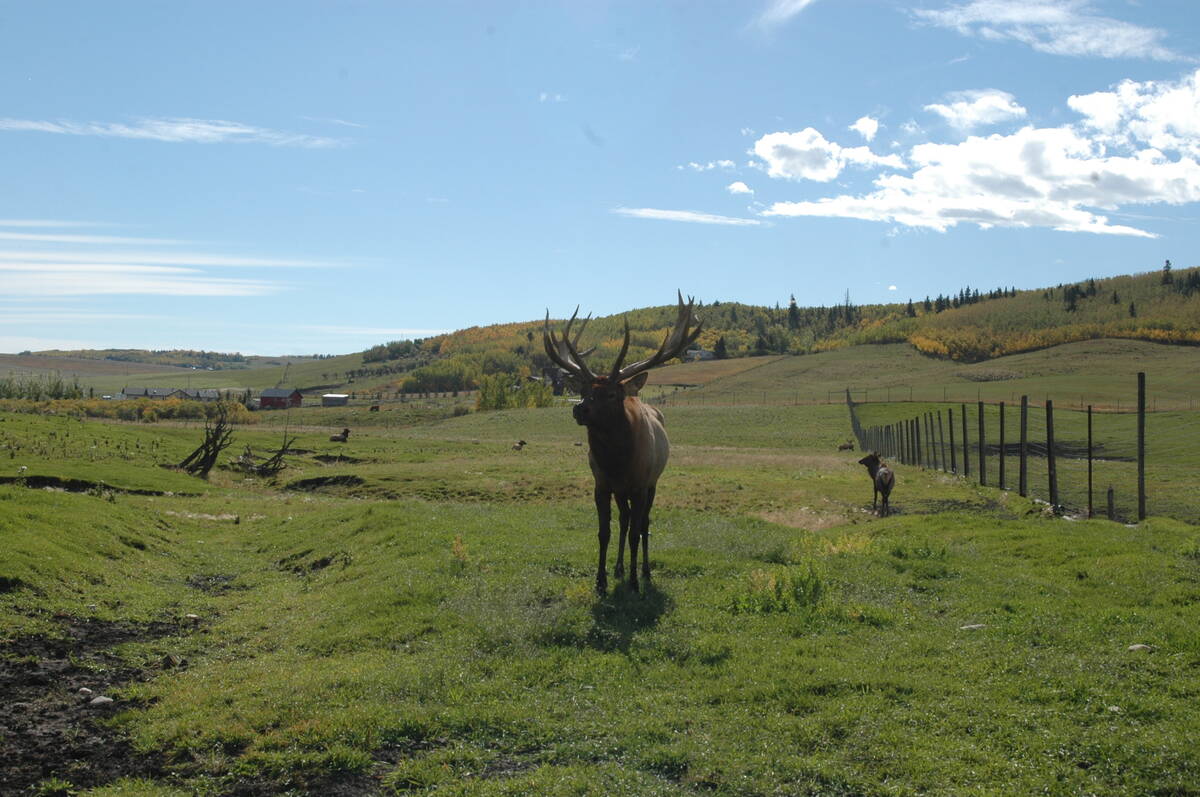
Feds propose overhaul of chronic wasting disease control program
Chronic Wasting disease control program getting updated by Canadian Food Inspection Agency with feedback encouraged from producers.
Bats become infected with the fungus, Pseudogymnoascus destructans, by direct contact with contaminated environments and other infected bats through mating and other behaviours. Cold, damp, dark caves are ideal for the fungi to survive and spread between bats. The infection leads to a white fuzz on the skin of the nose, ears and wings. As the fungus invades, it damages the skin, leading to dehydration and energy loss. Affected bats wake up from hibernation earlier than normal in the season. With no insects available to eat, their fat stores are rapidly depleted and they die of starvation and dehydration.
Scientists discovered this unusual fungus infection in the winter of 2006. People noticed bats flying during times when they should have been hibernating outside a cave near Albany, New York. It is likely that the fungus originated in Eurasia and hitchhiked on a person’s footwear. European bats are well-adapted to living with this fungus and do not typically develop disease associated with infection.
Since this discovery, the disease has spread steadily west across Canada and the United States at a rate of about 200 to 900 kilometres per year.
It has likely been helped along by people who visited contaminated caves and spread the fungus to new areas. It was only a matter of time before it reached the prairie provinces.
Because the fungus is new to North American bats, they have little immunity or resistance to infection. Bat population declines due to white nose syndrome have reached more than 90 percent in eastern Canadian provinces and the northeastern U.S. Since it was first discovered, it is estimated that millions of bats have died.
Alberta is home to nine bat species, including long-eared bats and little brown bats, which have been devastated by this disease in Eastern Canada. Scientists estimate that population recovery will take decades, if at all, because bats are very slow to reproduce with the production of only one offspring per year.
The fungus is particularly sinister because it prefers the cold (less than 20 C) and attacks hibernating bats. During this time, their immune system is least effective and their body temperature is at its lowest (1 C to 16 C). Combined, these two factors allow the fungus to grow and spread during the winter.
The fungus poses no direct risk to human health or to species other than bats. But the decimation of bat populations will affect overall ecosystem health and agriculture. Bats consume vast amounts of insects, including those that are pests to agricultural production.
Specifically, more adult and larval crop pests are expected in areas where bat populations are reduced. Insect vectors that spread crop fungi are also likely to increase. In areas where white nose syndrome is severe, preliminary research suggests there has been an increased use of insecticide and fungicides. Some have estimated the potential economic impact of this disease to be in the billions of dollars.
With its current rate of spread, the fungus will likely reach bats in all provinces and possibly the southern areas of the northern territories in the next few years.
This disease is among the most severe infectious diseases to ever affect wildlife populations in Canada. There are no effective treatments, vaccines, or control measures to limit its impact.
Without a doubt, the situation for bats is bleak.
Dr. Jamie Rothenburger, DVM, MVetSc,PhD, DACVP, is a veterinarian who practices pathology and is an assistant professor at the University of Calgary’s Faculty of Veterinary Medicine. Twitter: @JRothenburger



